Tony Stark is a genius, billionaire, playboy, philanthropist who’s also the invincible Iron Man! By using his knowledge and experience in technology and science, he builds a suit to eventually fight for the good of humankind as the red-golden Avenger Iron Man. Stark’s suit and scientific innovation appealed to the imagination of Irish scientist Barry W. Fitzgerald. He wondered if it would be possible to build a real working Iron Man suit as depicted in the comic books and films. The answer is: yes (well almost)! In his book How to Build an Iron Man Suit, Barry shows what’s currently possible and what is still science fiction. In our How to Build an Iron Man Suit interview, Modern Myths talked to this superhero scientist to find out more about his new book and his work on building some aspects of the suit.
Also read Jeroen’s book review of How to Build an Iron Man Suit!
Barry W. Fitzgerald, PhD is a fan of Tony Stark since before the first Iron Man movie of 2008. He recognized that many of the features of the Iron Man suit are based on real-life technologies. Barry wondered if it’s possible for an individual to build the Iron Man suit and began an intense period of research to find out.
- Barry, let’s ask right away: how much of the current Iron Man technology you see in the movies is based on real life science?

Barry W. Fitzgerald: We could be here all day talking about that. And that’s why I wrote the book, to demonstrate current scientific and technological advancements that could be used in a real Iron Man-like suit. When you ask people what the Iron Man suit does, they will immediately say: it flies. Also, it shoots rockets. But what they forget about are the secondary systems that are very important: it protects the wearer. There are life support systems, biomedical sensors, proximity sensors, wound healing treatments. It allows Tony Stark to do things that he could not do before. It enhances his abilities, and it gives him extra stamina. At the end of the day, he’s just a normal person. Without the suit, he would get knocked down by anybody. He would have no chance against any of the super-powered individuals he goes up against. The suit allows him to do that, to fight and to compete. It allows him to be a superhero on a level that you would expect of a superhero. But the suit protects him and heals him too.
- Can you give an estimate of how much of the suit is possible today?
75 percent. The missing 25 percent includes the crucial things: the flight capability. There are suits out there that can fly, that have been portrayed as the Iron Man suit in the media. There’s the Gravity suit, and the Zapata Flying Board Air – which actually looks like Green Goblin’s hoverboard. But the flight capability of these devices is far from the flight capability of the Iron Man suit. That’s the one that’s missing. The weapons systems of the suit – which I don’t promote in the book – are also a long way off. And perhaps some elements of the controls would also be some distance away. But everything else? 75 percent is already available to us – and that includes the biosensors, the materials, control with voice assistance or brainwave technology, the wound healing treatments, the exoskeleton foundation, flight mode as a drone and lots more besides.
How to Build an Iron Man Suit interview: the Zapata Flyboard Air
- It’s a very thick book and you still had to make choices. When reading it, you think: what about the wiring, what about the machines who put it together? What tools to use? What computer programs?
I had a whole chapter on how you can build the suit with robots and how these work together to make the suit and put the suit on a wearer. I had to take it out, because the book was getting too long. I also had a chapter on the programming language you need, which you get a glimpse at in Spider-Man: Homecoming. Peter Parker and Ned try to remove the safety protocols in the Spider-Man suit so Peter can use the suit’s full capabilities. You see the programming language briefly on screen, which is the key towards programming the technology. I would love to put that all in, but something had to go. Also, the suit is a toilet. Tony urinates in it in Iron Man 2. I had a whole bunch of research about that written for the book, but couldn’t put that in as well. There’s so much stuff I couldn’t include in the book.

- When will you have to write a second volume of your book? When is the book behind the current curve of technology?

I use the real scientific concepts you learn at school, so that’s always going to be there. But then I refer to scientific research which is going on right now. The book is from the last five or six months, no older than that. Research moves on, things improve and change. I’m a scientist, I see papers which improve the technology. But it takes a bit longer for all the stuff to be implemented in an application which can be used and has an impact on society. I’m fairly confident my book will still hold up in five years’ time. So, when will I write a new book? When Marvel Studios introduces a character I’m thinking of who has developed similar technology: Riri Williams. If they bring Riri into the Marvel Cinematic Universe – which I’m pretty sure they’re going to do – I want to take a look at the science and engineering behind her creations. But even then, I just watched Captain America: Civil War again and I saw some things I completely forgot about, and these could have been a whole chapter.
- There’s a lot of advanced technology other than the Iron Man suit in the MCU films. For example, there are the helicarriers, the Ant-Man suit, and such. What are your thoughts on that?
You see the arc reactor in the Hulkbuster armor in Age of Ultron. You can see Tony adding to all that technology. He loses his voice assistant Jarvis in the creation of Vision, but then he turns to another voice assistant in Friday. That voice assistance also evolves. They’ve used an Irish actor for Friday by the way: Kerry Condon. Her language and accent is very Irish. She even uses Irish slang. While Stark is fighting Bucky Barnes in the Hydra base in Siberia, Barnes tries to escape. Tony’s targeting system is damaged and Friday tells him: “the targeting system is knackered, boss”, which is a very Irish phrase.
Then there’s the advanced level of control Tony has in the suit. In order to use things, we need to touch them. Even with the amount of voice control we have at our disposal now, the first Iron Man movie from 2008 shows how that could develop even further. You see this in Star Trek on the Starship Enterprise when they’re talking to the computers. It provides a glimpse at the future and how technology could work for us. In addition it shows how we can train such technologies to work with us. And then Stark can deploy the suits as drones, lots of drones, using the house protocol in Iron Man 3. You have the Iron Legion from Age of Ultron, which are drones. Ultron himself is able to command drones.
- A big part of your book is about the ethics of building an Iron Man suit. You’d expect that such a suit would first be developed in the weapons industry, for use in armies. Do you think that as a people the human race is capable of building an ethical Iron Man suit?
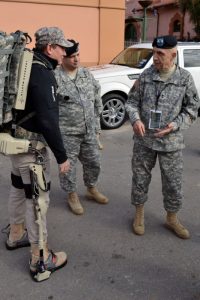
I hope it will be built in an ethical way, but I’m afraid it won’t be. It doesn’t matter if it’s a company, a corporation or a government. If you produce something like this, they all want to use it for defence. Particularly the companies, corporations and countries that are pursuing this. The big countries who have the big budgets. For instance, the U.S. government has a history of pouring money into exoskeletons that don’t work, like the Human Universal Load Carrier system or “HULC” for short. It was designed as an exoskeleton suit to be worn by soldiers during missions. However there is a fatal flaw with the technology. When a soldier wears the HULC system, they burn more calories than they do when they’re not wearing the suit. It’s an absolute waste of technology. Or the TALOS suit, which cost millions of millions of dollars and never reached the capability they promised. It was incorrectly promoted as the Iron Man suit, which set expectations way too high.
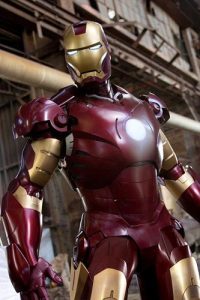
- You need Russia to develop the Crimson Dynamo for America to build an Iron Man?
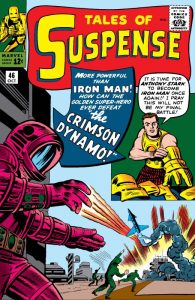
In some ways yes, there needs to be healthy competition in the development and innovation of any new technologies. I would hope that these motivations are fundamentally ethical. But that’s not always the case of course. I don’t want to see the motivation for the development of Iron Man-like suits to be enhanced soldiers or conflict. That’s why I don’t promote the suit as a weapon in the book. Perhaps it will help to protect soldiers. It could be used to help in the rescue of people from warzones. It might also be a protective healthcare device that monitors the body of the wearer, and helps them.
- They’re approaching it from the wrong side? You’ll need the medical suit to progress into Iron Man? The space suits to progress into it?
Exactly. It’s not about building a weapon that’s worn by a small number of people – it’s about building something that can benefit as many people as possible. Astronauts wear suits in space. The primary aim of the suit is to keep them alive and protect them. It’s a protective layer and provides them with oxygen, heat and everything we take for granted here on Earth. The suits worn by astronauts create an artificial environment for the wearer to survive and prolongs their life when they’re exploring the darkness of outer space. The Iron Man suit – while Tony Stark uses it to fight bad guys and when he is in conflict – is also designed to keep the wearer alive.
- Are we aiming to use this suit for medical purposes , or will some groups or individuals try to develop a military version?
I hope that any suit will be built in an ethical way, so my hope is that this will be built as a medical device. But you’ll never know where you end up when starting a project like this. Maybe you’ll get a really useful healthcare device that people can use to help others. But then you have to manage, store, and protect any biometric data that is collected using the suit in the right manner. Who collects it? How is it used? That’s a whole other discussion. Or look at the voice assistant controls. The voice assistants used by Tony Stark are examples of very biased systems. In the real world, voice assistants such as Siri or Alexa are trained by people with inherent biases. They’re not universal. Tony’s systems are the prime example of personalised, biased systems. They’re very narrow, based on western technology and culture. That’s not representative of the world.
- How do we overcome that?
You need to make sure that any technology you develop includes contributions from scientists, engineers, designers, and importantly ethicists, throughout the process. Tony Stark is not an ethicist – far from it. But he becomes more ethical, a little more forward-thinking about his suits. In Iron Man 3, the Iron Legion is only coded via brainwaves to Tony himself. Therefore, the suits are biased in terms of their use.
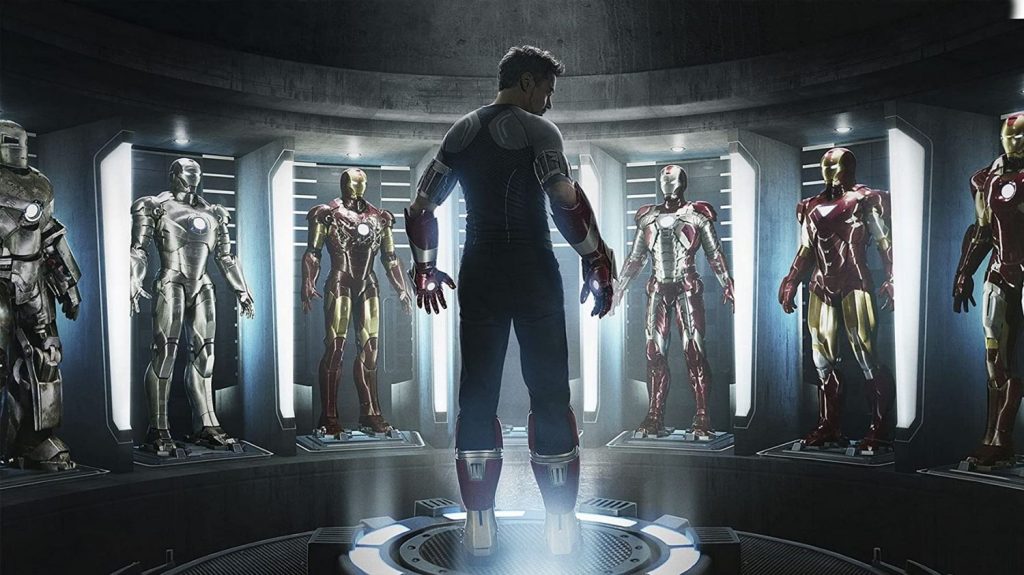
However, at the start of Avengers: Endgame, Tony takes off the housing that stores the Iron Man Mark 50 suit, gives it to Captain America and says: “You put this on”. This indicates that by the time we reach Avengers: Endgame, Tony Stark is building technology anyone (from the Avengers anyway) can wear. In reality, for Steve Rogers (or anyone else for that matter) to use the suit they would have to train for hours in the laboratory with the technology. And then for anyone from any country to be able to use the suit, the voice assistant would have to be trained in multiple languages and have been trained with data from multinational backgrounds. The aim should be a universal voice assistance that can adapt to slang from different cultures and countries.
But do we need a generic, multinational voice assistant? Do we need this kind of voice control? As a society we’re accustomed to novelty, gadgets and gizmos, and the Iron Man suit is the ultimate version gadget. Take Alexa for example, I have friends in Ireland who use Alexa a lot. But my concern is that it is a very unethical system. It can always be recording what family members are saying, there’ll be mistakes in the code for interpreting verbal instructions, and it records data. It helps you pick your film and gives you the best options for your pizza, but where does that data go? Who has it? What is it used for in future?
- As a scientist, do you believe in doomsday scenarios like Terminator, a post-apocalyptic future for the human race?
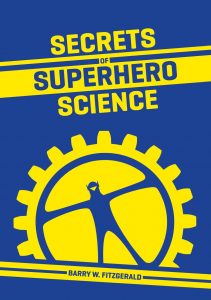
No, I don’t. As entertainment, I like watching those films. But the problem I have is when something is developed, in topics such as artificial intelligence or genetic engineering, people immediately reference the films that feature imagined, with all the negative repercussions. Many elements of the media seem to be preoccupied with generating instant fear in society, rather than reporting the veracity of the story.
The same goes for the Iron Man suit. When people talk about a flying suit or when the media write a story about a flying, personalized technology, some of the principle analogies relate to the Iron Man suit. What I’m trying to do is show that the suit is not a weapon – it is actually an advanced medical healthcare suit, a mobility tool that could change the lives of millions of people who cannot move around our world in the same way that most people can. The Iron Man suit is far more than just a weapon, yet you don’t see that mentioned on the news in relation to stories with the Iron Man suit.
- How did you do the research for this book? There’s so much in it. I imagine that you read scientific papers day and night.
That’s exactly what I did for this book. I found an old notebook from May 2018, that’s when I first thought about writing this book. But I only really started working on it in February 2019, after which it took seven months to write How to Build an Iron Man Suit. For those seven months I was eating, drinking and sleeping superhero films and scientific papers. I would go on Google Scholar and just start searching for papers on various topics on science and engineering. I call it research ‘mining’. There’s so much literature out there though. I would look for a topic – motivated by a scene from the movies – and find numerous papers by researchers from all around the world. I used the work of researchers from numerous universities and research institutes to explain how different aspects of a real Iron Man suit might work.
- And then you find things like a Chinese research group who worked on thermoelectric Indicator Cycling helmets?

Yes, that’s what you find! Exactly! I thought this research was absolutely brilliant. It’s a wearable technology, just like the Iron Man suit, which has indicator lights on the outside of the helmet. There’s no battery in the helmet to provide power for the lights. Instead, the helmet contains thermoelectric materials that convert waste heat from the wearer’s head into electricity for the lights. Who’s to say you can’t power an Iron Man-like suit with body heat in the future? Of course, it would be rather difficult to generate enough electricity. It’s more likely that these materials could be included in a suit to make it a bit more sustainable. It’s a crazy application, but it certainly fits in with the Iron Man technology.
- It makes the book really fun. So, you have an exoskeleton at home?
Yes, I do.
- How far ahead are you with your own Iron Man suit?
I bought an exoskeleton suit which is complete in terms of what it does. It’s called the Laevo Exoskeleton Suit. It’s a passive suit, which means that it has no electronics. It’s a healthcare device, that can be used by healthcare workers in hospitals when lifting patients out of bed from one point to another. It can also be used by people working in factories who move objects from one point to another. The suit has been designed to alleviate stress and strain on your back, while also ensuring that you maintain proper posture when lifting.
How to Build an Iron Man Suit interview: the Laevo Exoskeleton Suit
In terms of my Iron Man-like suit, it is the foundation. I’m doing what I write about in the book: going out there and finding some of the relevant technologies that are available now, bringing them together, to build a suit. Right now I’ve got the exoskeleton, a robotic arm known as the EDUEXO (which can be used for education) and a EEG brainwave-reading technology known as Muse that can be used for meditation. I’ve also got a thermoelectric watch known as the Matrix PowerWatch. I’m just collecting these technologies to demonstrate that we already have many of the technologies that can be found in one of the Iron Man suits developed by Tony Stark. Eventually I would like to build a full arm, including medical sensors.
- What’s your budget?
That depends how often I can speak about these things on panels and how many books I can sell. The more books I sell, the sooner I can build this!
- If you look at how Tony uses the armour, you wonder why he’s still inside. Why not remote control the Iron Man suit all the time?
To answer that question, just think about NASA. We’ve gone to Mars, we’ve sent rovers to Mars and we’re sending more rovers to Mars. Just think of the Perseverance Rovers on Mars. They can do lots of things – they can take soil samples, analyse the atmosphere, take some very nice images. But it’s still desirable to send a person to Mars. A person can see and do things that a robotic rover cannot. They can interact with the environment in a way that robotic technology often can’t be programmed to do.
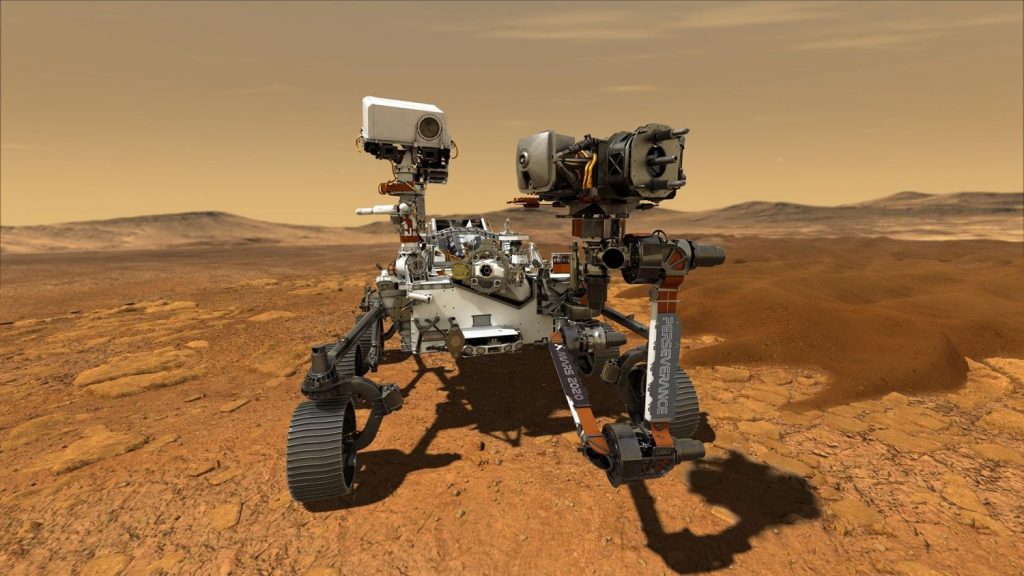
For the same reason, that’s why Tony is still in the Iron Man suit, why James Rhodes is in the War Machine armour, and why Pepper Potts is in the Rescue suit. Human intuition for certain situations cannot be replicated by robotic technologies and humans can make decisions and judgements that robotic technologies might not. Humans will act on a hunch, robots will act on probabilities determined by measurements of certain factors. However, unlike humans, robots cannot (and more than likely never will) be able to detect emotions from an individual, a group, and decipher the general mood of a room full of people.
In the MCU, we’ve seen Tony Stark use his suits in drone mode with the House Protocol in Iron Man 3. Yet even when his suits fight Aldrich Killian’s army under the direction of Jarvis, they remain under Tony Stark’s overall control thanks to the communication device. During the battle, Stark tells Jarvis to do certain things with the suits on more than one occasion. This shows the importance of the human in the use of technologies. We interpolate and sense things that robotic technologies may never be able to. So Tony still wears the suit because he can do many things that a Jarvis- or Friday-controlled suit cannot. That’s why you need someone in the suit.
- How would you think an Iron Man suit might look in the future?

If we do build it, it won’t fly in the way we see it fly in the films. If it’s made available to the general public, it definitely won’t come with a flight option. I’d love to see a commercial suit for everybody to use, something that we have at home. You step into it and it allows you to create a full body scan. In effect it could be a medical check-up at home. The biometric data measured with the suit could then be sent to your doctor for further analysis. In terms of functionality, the emphasis should be on the development of the healthcare technologies in the suit.
- How many years until that’s possible?
Let’s picture a suit that you can wear and does not fly and contains all the medical aspects. Maybe it will take 10 to 40 years, with many thousands of people working on it. It’s not about budget, it’s about time.
- What about nanobots, like the ones used by Stark in the Mark 50 and Mark 85 suits? Are they science fiction or science fact?

There’s a nano scientist – Robert A. Freitas Jr. – who has proposed nanobots that we could use in our body to transport nutrients, to help with breathing, and to clot wounds. People are actively pursuing the development of nanobots. We are already using nanotechnology for drug delivery, where you take a nano-vehicle carrying a drug, which can be guided around the body with magnets to a particular tissue or location, such as a tumour. But the nanobots Stark has, like Extremis in the comics – autonomous bots that can work together as a collective – that is science fiction… for now.
- What have you learned as a scientist from the Marvel movies?
They’re very good stories and from a scientific point of view, there’s a lot of real science in them. I’ve met some of the people who’ve acted as consultants for these films. I was at a conference in Los Angeles in 2018 and I was at a Hollywood panel with some of the scientists that Hollywood turns to for advice. The first person who spoke consulted for Ant-Man in 2015. He got a phone call from Marvel wanting to talk about quantum theory, because he is a quantum physicist. He then talked with the producers and Paul Rudd – who plays Ant-Man – during which they talked about quantum theory for three hours. He was then asked to be on set for the first week of filming. So they put a lot of real science in there and make it as believable and realistic as possible.

-
How to Build an Iron Man Suit interview: Heroes Reborn: Iron Man Iron Man in the movies looks better than for instance Iron Man with exhaust pipes, like in the Heroes Reborn: Iron Man comics.
Haha, yes, that’s just daft. But that’s what people in 1996 wanted, a kind of The Matrix feel. Now, the pinnacle is the Mark 50 or Mark 85 nanotech-based armour.
- What technology would you like to see in Iron Man 4, if that film is ever made of course?
What we haven’t seen yet, is the suit being inside the wearer. There’s this nanotechnology in a housing for the Mark 50 suit, but it would be fantastic to see, like in the Extremis comic, a suit that comes out of Stark’s body (but of course a potential Iron Man 4 film might not feature Tony Stark for obvious reasons). This brings up the discussion about the unification of machine and man and transhumanism issues. Is it right to combine man and machine in this way? Is it ethical? Is it safe? Should this be the next step with technology? But I would also love to see some of the advanced technologies that I write about in this book. We’ve seen the suit fly, we’ve seen the missiles, but let’s see more of the healthcare aspects in the spotlight. And we need to see a more sustainable depiction of the suit.
- Marvel can call you to help with that?
Yes, no problem at all. My fees are very reasonable (laughs).
- Let’s hope to see you there. Thank you so much for the interview.
No problem.
Barry W. Fitzgerald regularly speaks about his books and gives presentations about superhero science. Soon you’ll find him at Heroes Dutch Comic Con 2020. Meet him there to have your How to Build an Iron Man Suit book signed and take the opportunity to tell Barry how far ahead you are with your own Iron Man suit!
How to Build an Iron Man Suit interview –
Modern Myths Shop
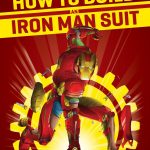
Or find it at The American Book Centre!
Want to read more Modern Myths interviews? Go to our section Interviews!
How to Build an Iron Man Suit interview: © 2020-2024 Modern Myths / Spider-Man: Homecoming © Sony Pictures / Iron Man, Ant-Man and the Wasp © Disney/Marvel
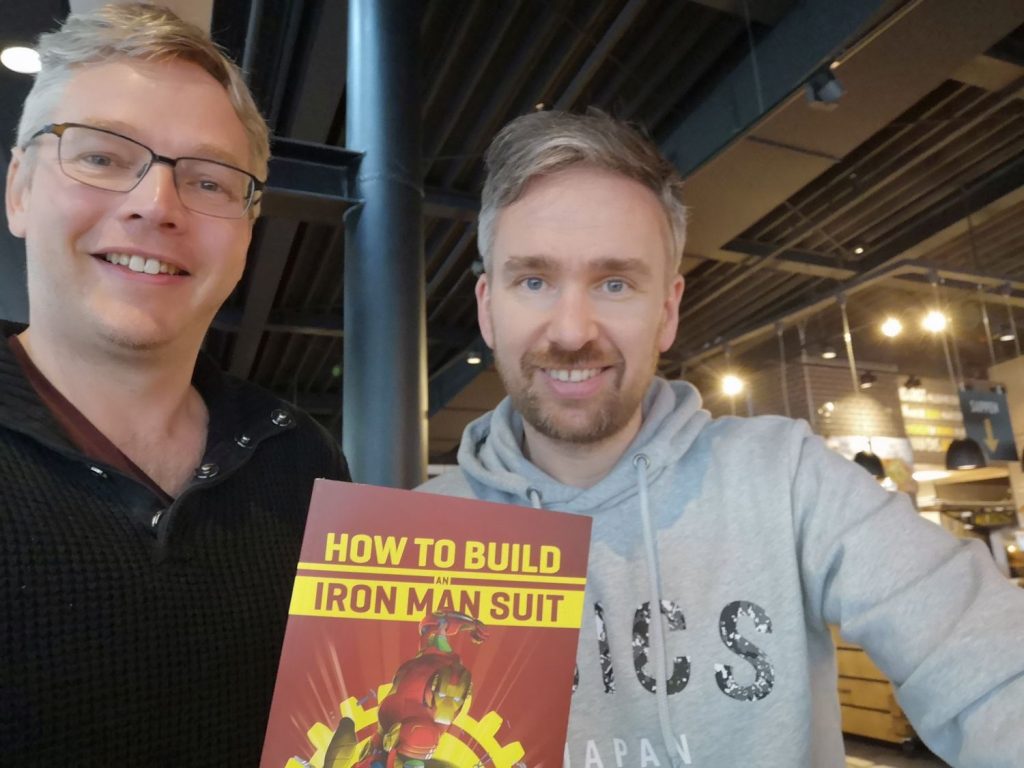

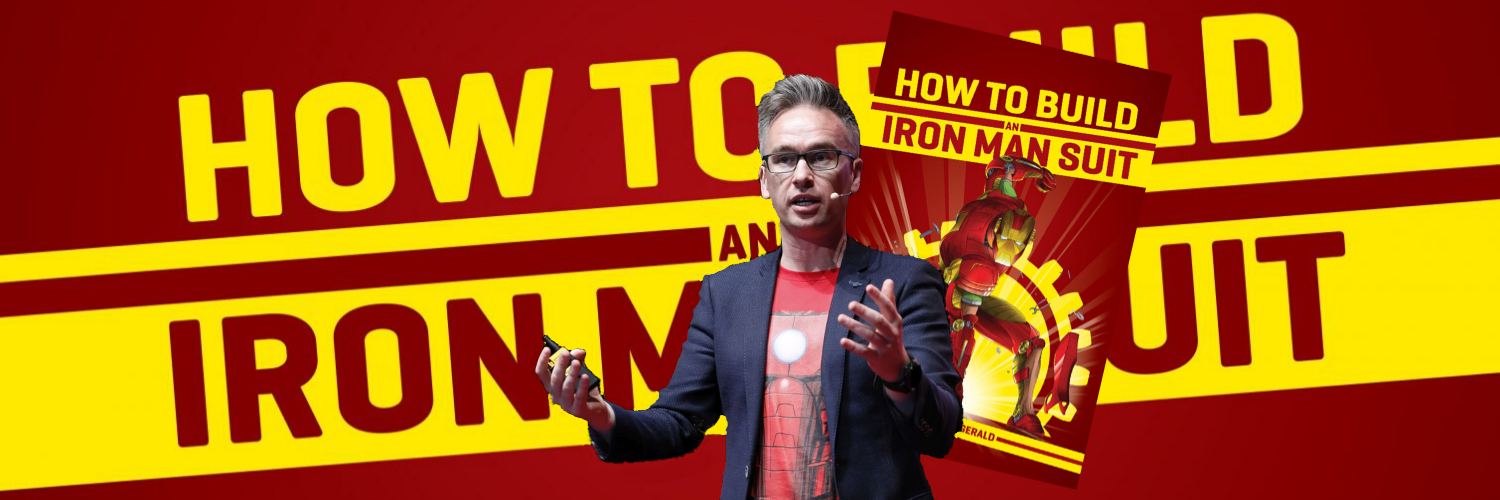

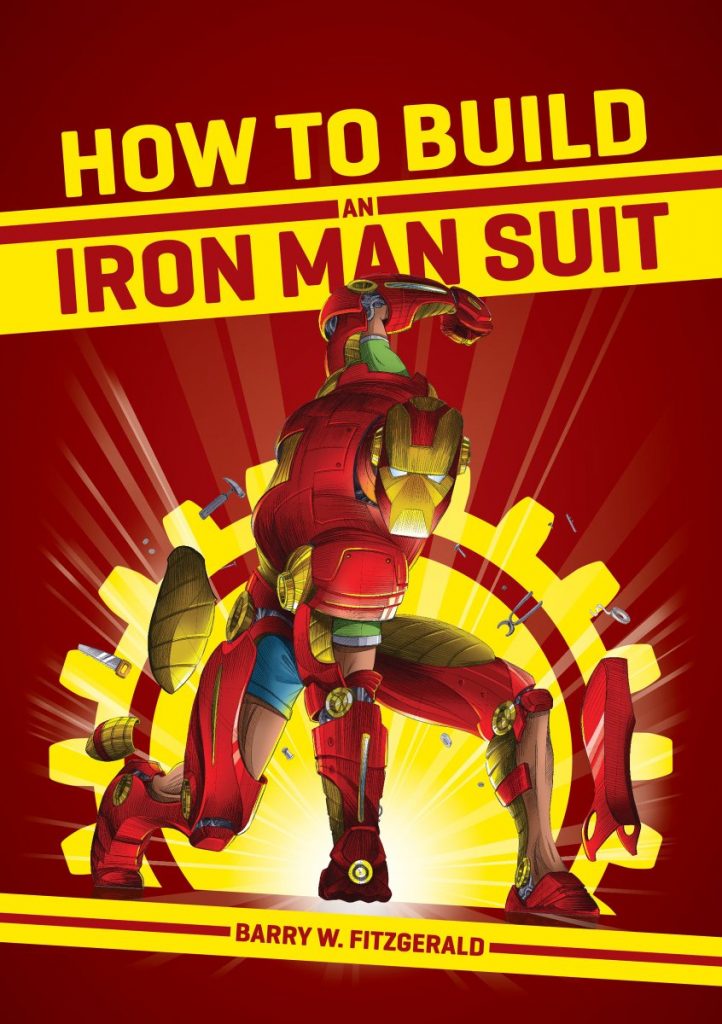
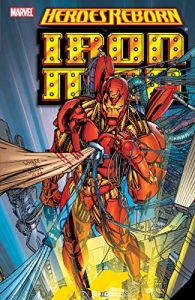








BWAHAHAHAHAHAHAHAHAH
75% that’s a funny joke.
We are at about maybe 30%
Sure, we can build a metal suit of armour. But that’s about it.
We don’t have a good power source
Biometric sensors for control
Flight capable technology
Weapons systems
Or advanced enough software
But yeah can build a robot suit sure
Feel free to discuss it with Barry on his website or social media pages Wingnut, I’m sure there’s room to adjust the percentage according to how you both approach the technology :-))